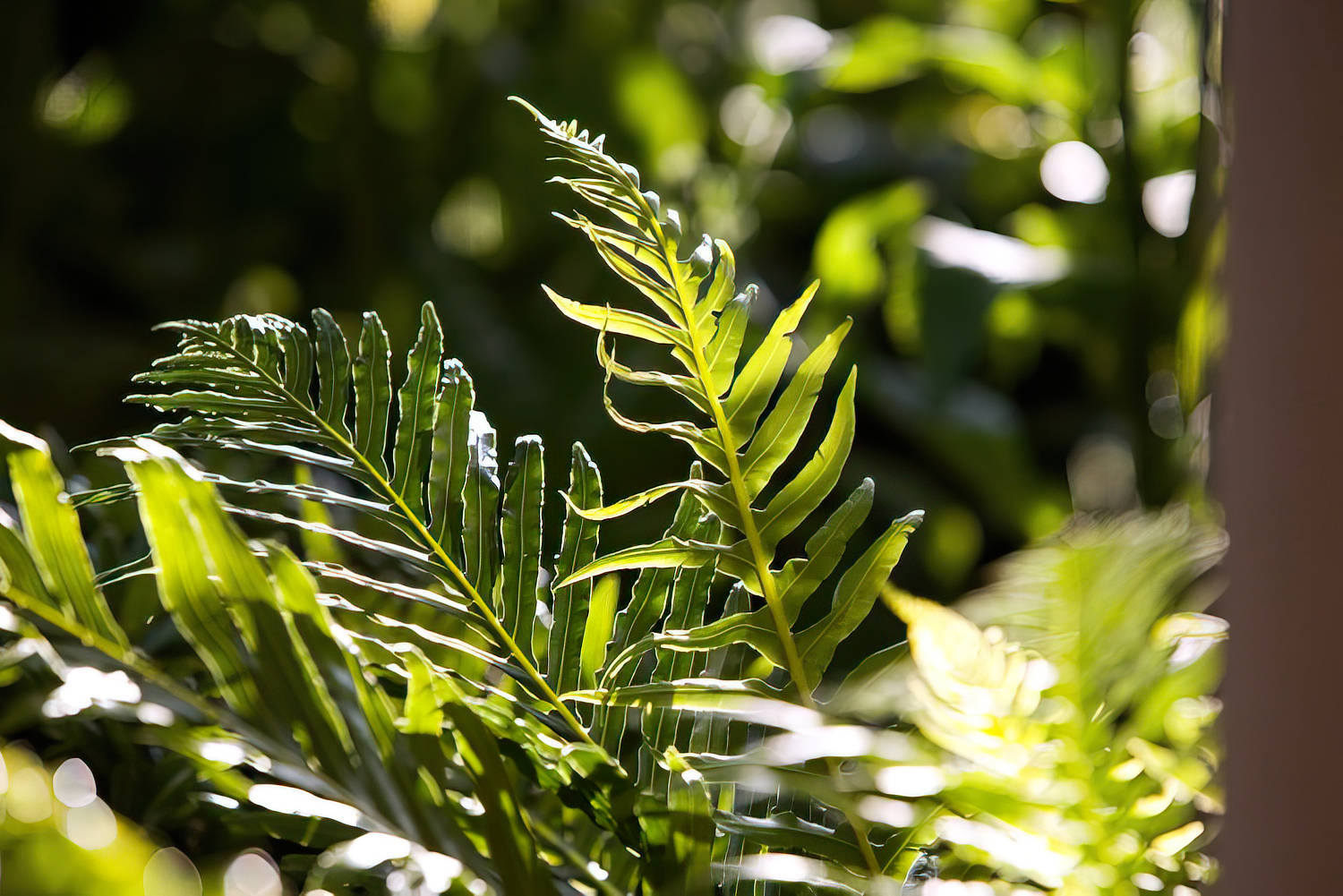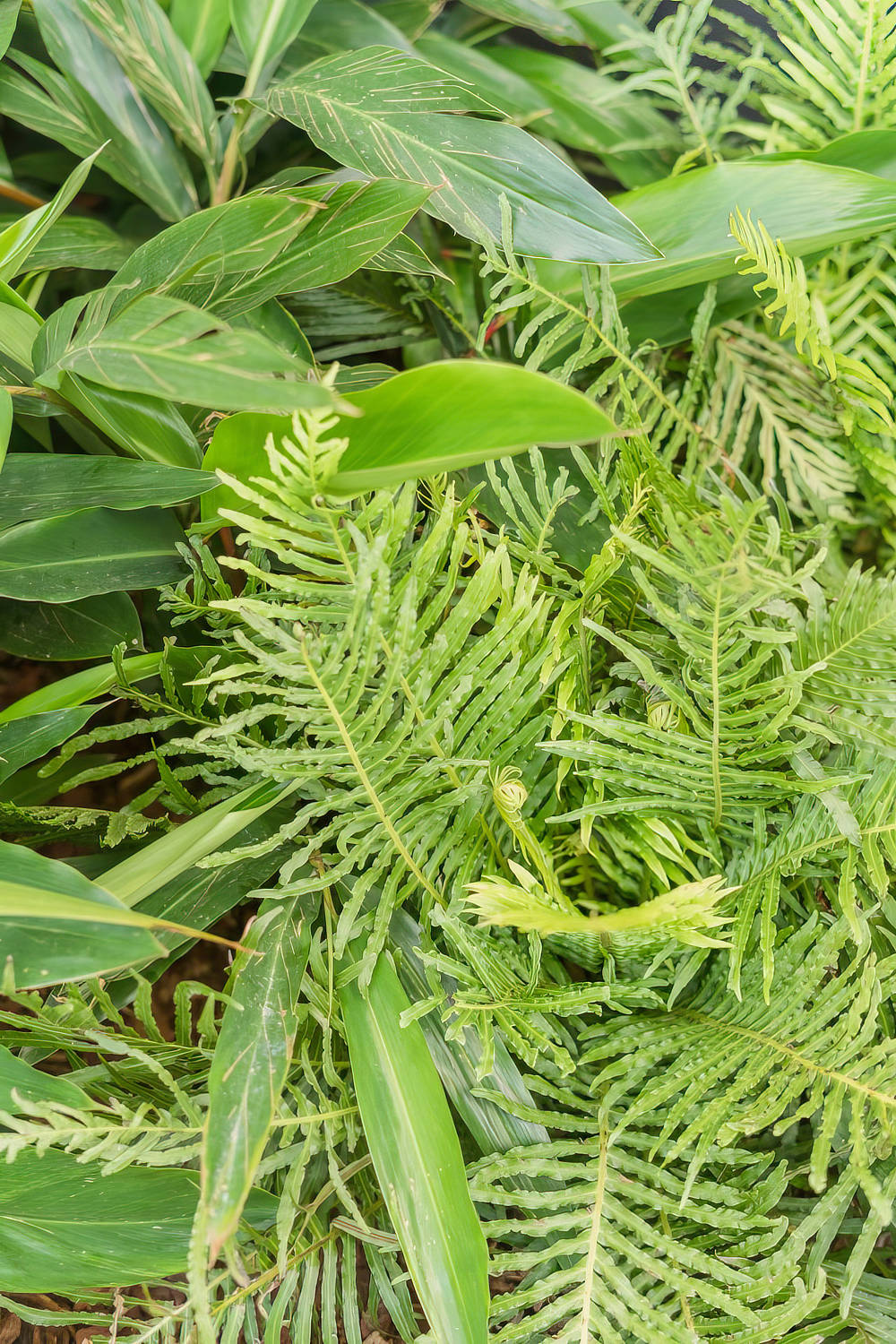Ferns are an often-underutilised plant in the garden and around the home. I love them as they fill out under trees in pockets of green, limey yellow, and often silvery blues. Ferns come in a huge variety of shapes and sizes from the enormous king ferns where each leaf can reach up to 6 meters long all the way down to tiny moss like ground covers. Most ferns however are small to medium sized plants that will suit any size of garden, balcony or life in a pot.
Contrary to popular belief ferns prefer light and bright conditions, or dappled shade, as long as they are not kept in complete darkness or blazing full sun they will perform well. This makes them perfect house plants to help bring the garden indoors. They do require reliable moisture but once established but this can be cut back in times of drought as long as you mulch heavily to insulate the soil and help prevent excessive evaporation.
Feeding ferns is also a simple task, I dilute my liquid fertilisers down to 50% strength as this will ensure they get the nutrients they need without going over the top with one certain nutrient causing issues. Ferns are also pest and disease resistant and only really get troubled by the odd mealy bug, brown scale, or copper rust. For rust issues, simply remove the effected fronds and bag and dispose of the greenery. For the other issues simple horticultural oil will do the trick.
In my garden I have a series of tree ferns the Dicksonia Antarctica planted under a large tree giving a secondary canopy to a stone a bench. This extra canopy of green gives a real sense of intimacy and security to the spot. For the under storey a combination of silver lady ferns Blechnium and Blue star ferns the Phlebodium aureum. The silver ladies offer shuttlecock like foliage erupting from the ground whereas the blue star has a delightful grey, blue colour to the leaf giving the feeling of extra light in the speckled shade and a point of difference and interest.
Another great ferns to try in your garden would be the birds nest fern the Asplenium australasicum. This medium sized fern is used to living as an epiphyte in the canopy of other trees and as such doesn’t have an extensive root system making it perfect under trees where the ground is hard and compacted. It’s also great in a pot on a shady balcony. When caring for this fern water into the crown of the plant and feed there too – they are natures compost bins so any dried leaves, banana skins or apple cores can go in the middle and break down to feed the fern.
If you have brown thumbs then you need to start growing the holly fern Cyrtomium fortune. It can handle sun, shade and everything in-between as well as acid or alkaline soil, so if you kill one of these you should either try a new hobby or consider that your neighbours are out poisoning your plants in the depth of night! I also love the look of this fern as it adds an incredible texture to a planting scheme and its versatility and hardy nature means you never have to worry about it.
If you don’t have any space for garden beds then start growing Stag or Elk horns, the Platycerium. Usually found mounted on boards and hung on a wall as a feature these ferns are also great in a hanging basket or hung from a tree for a natural look. I secure mine to the trunk of my trees using hessian that will eventually rot away once the fern has taken hold – don’t worry they are not parasitic and will not harm your trees.


